One of the most amazing indoor plants that can make a pleasant surprise to the florist in the season when the gaze lacks the colorful variety of spring-summer flowers is clivia. Care at home, built according to a competent scheme, leads to a rare phenomenon in other plants - flowering in the winter.
Clivia belongs to the Amaryllis family. It originates from the subtropical climate zone of the South African coast. It has long fleshy leaves, which are folded so densely at the base that they form a false stem. And from the center of the outlet in the midst of winter, with proper care, a pedicel shoots with beautiful bell-shaped flowers, collected in a neat umbrella.
To enjoy this natural phenomenon, you will have to make some efforts. How to care for clivia? What kind of soil does she like? How to keep it in the winter? Is it possible to achieve repeated flowering in the summer? We will talk about everything in order in this review.
Material Content:
Species and varieties
Flower varieties differ only in the color of the petals, which can be red, orange, yellow, orange-yellow.
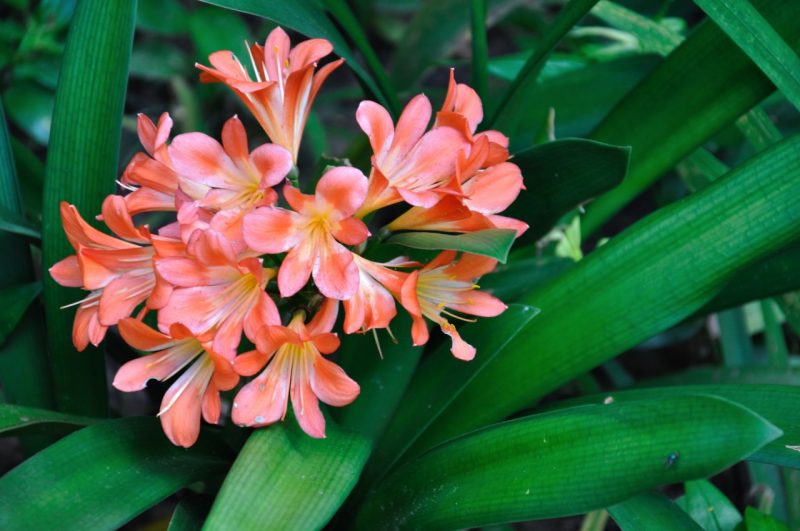
- Clivia cinnabar - the most common variety. The inflorescence contains from 10 to 20 orange-red flowers.
- Clivia Gardena differs from cinnabar in a slightly smaller number of flowers in an umbrella - usually up to 15, and also in a slightly higher peduncle.
- Clivia noble has a pale red color of petals and a curved perianth. The height of the peduncle is in the range from 30 to 50 cm. The number of flowers in the inflorescence can exceed 20 pieces.
Clivia: the nuances of growing
The most important thing that requires clivia from its owner is a cool wintering so as not to deplete the bulb and give it the opportunity to plant a flower stalk. During the flowering period, the temperature can be increased to room values. Another important point is to send the plant to “dosimetric” after flowering.

In the warm season, she likes to relax in the open ground. For the period from late May to early August, it can grow significantly and get stronger. Only it must be placed in the shade, as direct sunlight causes burns on the leaves! With the onset of the first cold August nights, it is brought into the room.
Home Care
Most of all, clivia is demanding on temperature conditions. Also, do not pour it, since the bulbs in excessively moist soil easily rot.
Temperature features, lighting, humidity
- In the warm season, clivia needs temperatures of about 20-25 degrees, and in winter she loves coolness. In late autumn, if possible, it should be moved to a bright place with an air temperature of 14-17 degrees.
- The clivia flower loves bright diffused light, but it is categorically unacceptable for prolonged exposure to direct sunlight. Therefore, it is placed on the western, eastern, northwestern and northeastern windows. If necessary, it can be shaded using mesh material.
- To air humidity, the flower is not as demanding as some others. Strictly speaking, subject to temperature conditions, there is no need to additionally moisten the air. On dry summer days you can spray in the mornings and evenings.
Soil requirements
Clivia soil is prepared from equal parts of turf and leaf soil with the addition of a small amount of sand, preferably coarse-grained. It is important that there is a drain hole in the pot, and at the bottom before planting there is a drainage layer of pebbles, expanded clay, stones, or at least coarse sand.
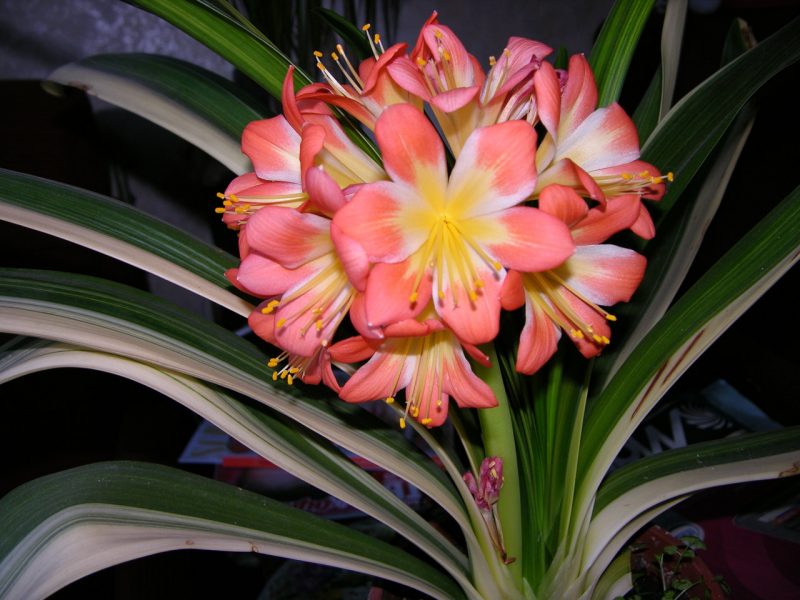
You can also use purchased soil for bulb plants, which, however, is best mixed with fertile garden or forest soil in a ratio of one to one.
Watering and feeding
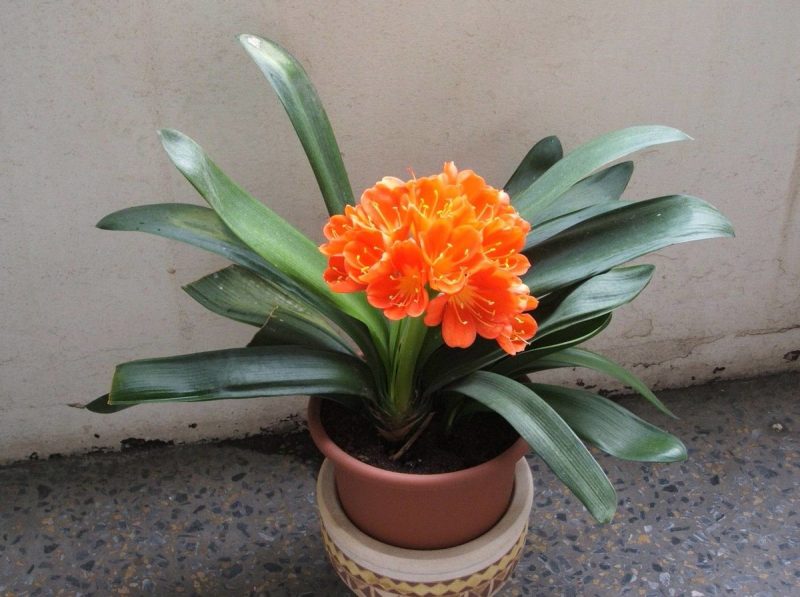
- Moisten the soil should be moderate, avoiding bays. This flower is at risk for the development of root and basal rot due to overflow.
- They feed the plant only during the period of active growth, that is, in spring and summer, with a frequency of 1-2 times a month. Universal complex organic fertilizers are suitable for this purpose: Giant, Ideal, and Nursery. Mineral fertilizers can also be used: dissolve superphosphate, potassium nitrate and urea in approximately equal proportions (a little less urea) in accordance with the instructions on the package. It is better not to overfeed nitrogen fertilizers, as this will lead to rapid growth of green mass without flowering.
Once you can feed potash fertilizers in the winter at the time of formation of the peduncle. In general, from autumn to early spring, you can not feed.
Flowering plants
A distinctive feature of clivia is winter flowering. It is so nice to admire beautiful flowers in gray winter evenings. In the interval between January and March, she throws an arrow out of an outlet of elongated leaves, on which flowers are formed, resembling bell-shaped ones. Their number can range from a couple of pieces to several tens. The color of the petals is usually red, red-pink, less often yellow. You can admire this beauty for 20-30 days, while flowering continues.

In the dormant period, clivia passes soon after flowering, that is, in the second half of winter or early March.
Feature! A plant with a peduncle that has appeared should not be rearranged in a new place, otherwise the buds will fall.
Flower transplant
It is worth replanting this bulbous plant only when absolutely necessary, since damaged roots easily rot. The exception is young specimens, which in the first 2-3 years of life can be handled every year.The main criterion that indicates the onset of an extreme case: the roots fall out of the drainage hole or braid the earthen lump so tightly that they do not fit into the pot.
When transplanting, they try not to destroy the earthen lump. The new tank should be slightly larger than the previous one and not inferior to it in the quality of the drainage tab.
Very old plants, especially older than 10 years, can not be transplanted until the end of life, but only annually replace the topsoil with a new, fertile soil.
Winter care
In winter, when kept cool, clivia does not need frequent watering. You can moisten the soil only 1-2 times a month as it dries.
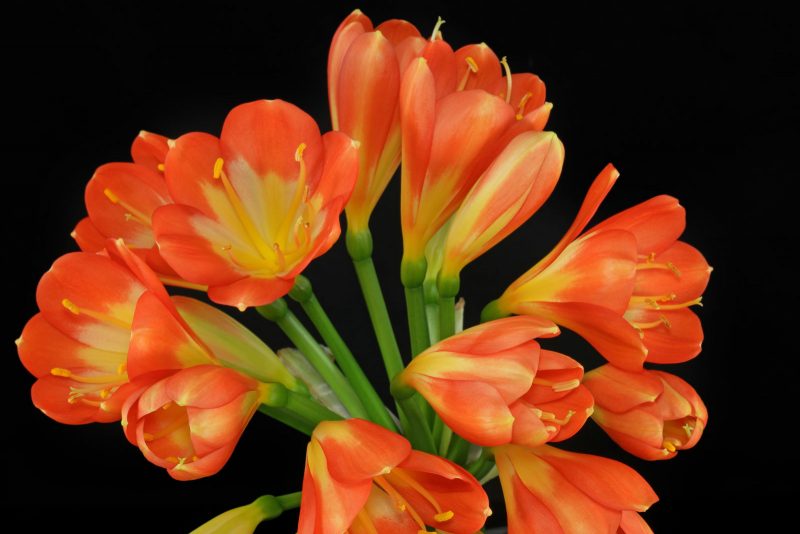
We must not forget that at temperatures below +12, clivia dies! It is desirable that she winter at temperatures of +14 ... +17 degrees.
When a peduncle appears, the temperature is increased to 18-20 degrees. A cool window sill is good for this, but without drafts! After the flowers wither, the plant is returned to cool until March.
Clivia breeding
Clivia breeds in two main ways:
- Most often, clivia is propagated by onion-bulbs, which are formed in large numbers around adult plants. Dig them up as carefully as possible to damage as little as possible the roots of the mother plant.
- Planting seeds. True, seed plants bloom only after 2-3 years, but this does not stop fans. Another caveat: only adult specimens older than eight years can give seeds! It should also be noted that the formation of ovaries is possible only with cross-pollination. But, if it is possible to grow planting material, then propagate the flower will not leave difficulty.
The main thing is to remember that the seeds quickly lose germination after harvesting, so they should be sown immediately.
The procedure for sowing and growing is standard for most ornamental plants:
- Prepare a standard soil and fill it in shallow containers with drainage holes.
- Seeds are distributed over the surface of the soil mixture, slightly pressed, moisten the earth with a spray bottle and cover the containers with polyethylene or a mini-greenhouse and leave in a bright room with room air temperature.
- The first shoots appear in 3-4 weeks. When they grow a little, you can plant them in small pots.
Pests and diseases - how to treat?
Of the pests, clivia love to eat scale insects and mealy bugs.
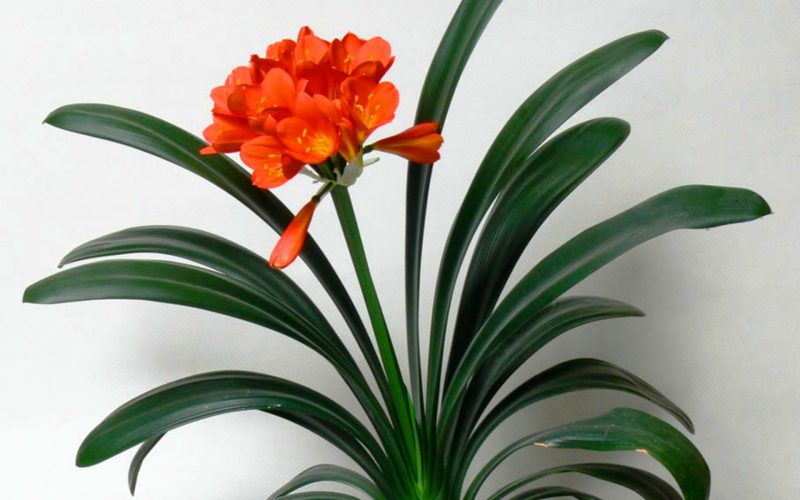
- Shields resemble strange dark brown motionless growths with a diameter of a few millimeters to a centimeter.
- Mealybugs - These are white small insects that love to settle in the axils of the leaves.
Both pests are well bred by Aktara and Aktellik. Actara not only spray the affected plants, but also water the soil. The active ingredients of this drug are harmless to plants, but toxic to pests.
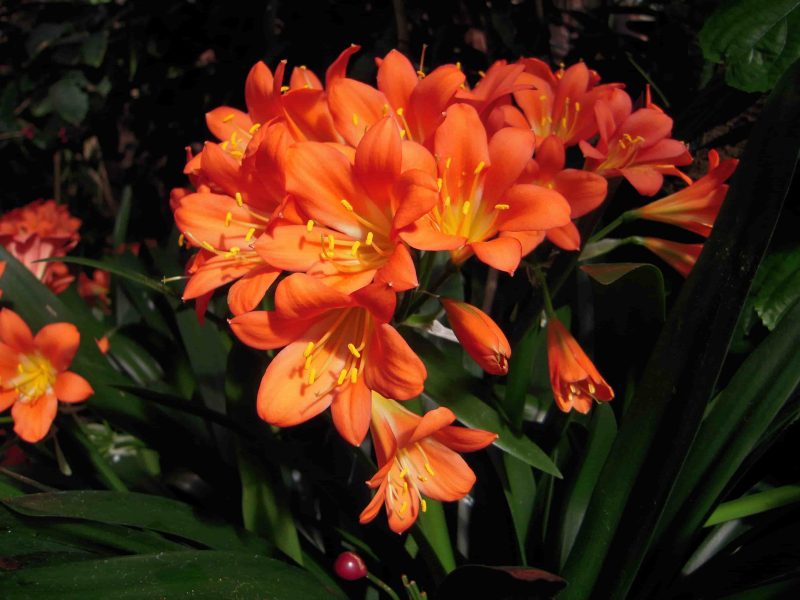
Of the fungal diseases, most often the plant suffers from root rot and bulb decay. Leaves with rotting root system become brown and fade. Unfortunately, the process can only be stopped at an early stage, when the symptoms are just beginning to manifest. To do this, the flower is taken out of the pot, its roots are washed in warm water and treated with Fitosporin. Rotten areas are ruthlessly removed, and sections are sprinkled with charcoal (wood or activated).
Why does clivia not bloom, turn yellow, the leaves dry?
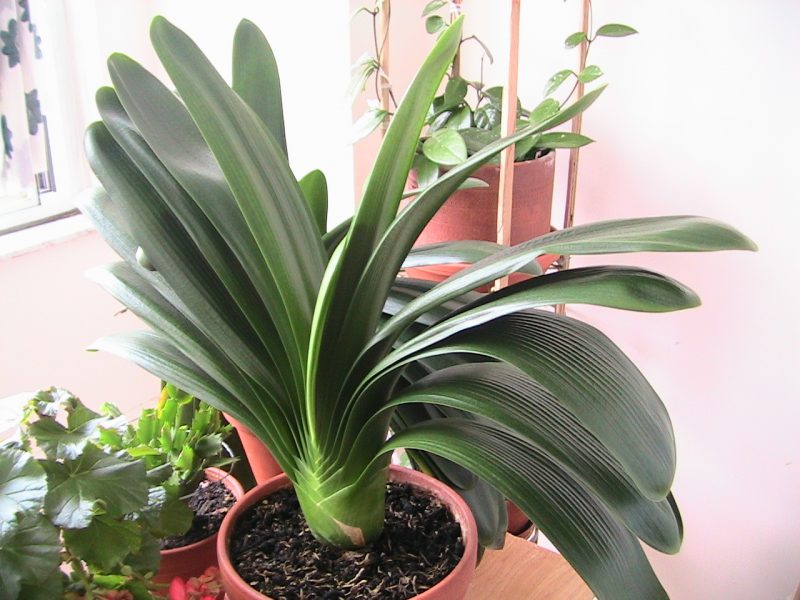
Why clivia does not bloom depends on several factors.
- To bookmark the buds, the plant needs winter coolness.
- The consequences of the bay or, conversely, the drying out of the land may affect.
- Bulbs-children can take a lot of energy, which makes sense to plant when they grow 3-4 leaves.
Important! If the leaves turn brown during overflow, then with a lack of water, their tips turn yellow and dry. Therefore, in the winter, you need to regularly visit and check the condition of the flower: suddenly it's time to water.
Those who do not like winter for dullness and monotony, should definitely get clivia. Yes, it will require attention, but its abundant and spectacular flowering will cheer you up and help you wait for a warm spring.












